
7 Common Laundry Myths Debunked
When it comes to laundry and washing machine dilemmas, we’re all after the quickest (and probably cheapest) method to solve our dilemmas. There are some really great laundry hacks out there that can save you time and money when it comes to washing clothes, however there are also quite a few laundry myths out there that could waste your time and could also make your laundry dilemma or dilemmas worse.
To help you out, we’ve debunked seven of the most common laundry myths and included some real facts that you can use to make your washing and laundry that little bit easier. These laundry myths might have been true at one point but products and technologies change unfortunately and so it’s important to know what you’re dealing with when it comes to laundry tips and trying to remove stubborn stains. Covering everything from laundry detergent, hand washing clothes and washing jeans to fabric softener, removing ink stains and the sock monster, this guide also includes a useful infographic at the end to help you visualise and remember these common laundry myths in a visual format.
Contents
Myth 1: More Laundry Detergent Means Cleaner ClothesMyth 2: Hand Wash Items Have To Actually Be Hand Washed
Myth 3: Jeans Should Be Washed Frequently
Myth 4: Fabric Softener Is Always Necessary
Myth 5: High Dryer Heat Causes Clothes To Shrink
Myth 6: Hairspray Removes Ink Stains
Myth 7: The Sock Monster Is Real
Infographic - 7 Common Laundry Myths Debunked
Myth 1: More laundry detergent means cleaner clothes
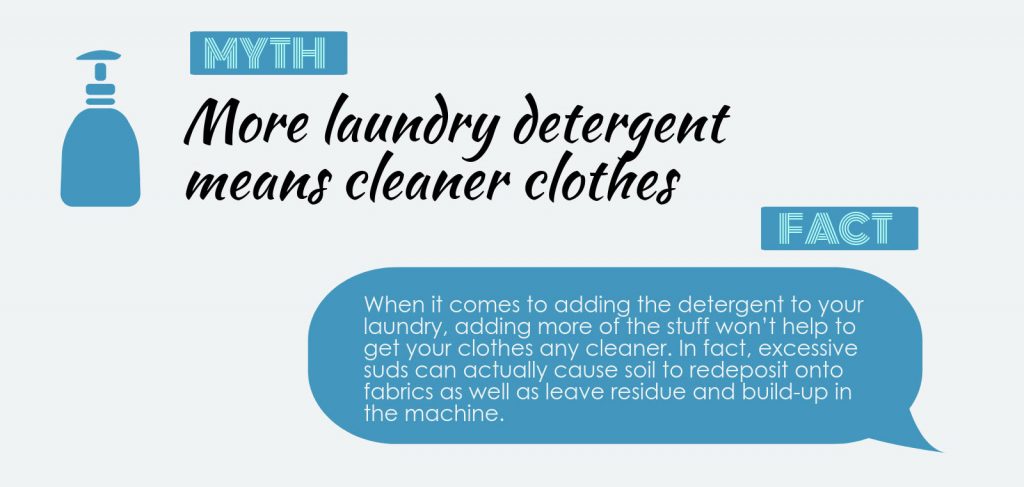
How much laundry detergent to use?
It’s a very common misconception that adding more laundry detergent to your washing machine will help to make your clothes cleaner. This unfortunately isn’t the case and in fact can actually cause more harm than good when it comes to your clothes and washing machine. Washing your clothes with detergent is essentially washing your clothes with some chemicals to get rid of any dirt. So using excessive laundry detergent can cause the soap to cling to your clothes and not getting properly rinsed. Excessive suds can also leave residue which leads to build-up in your washing machine.
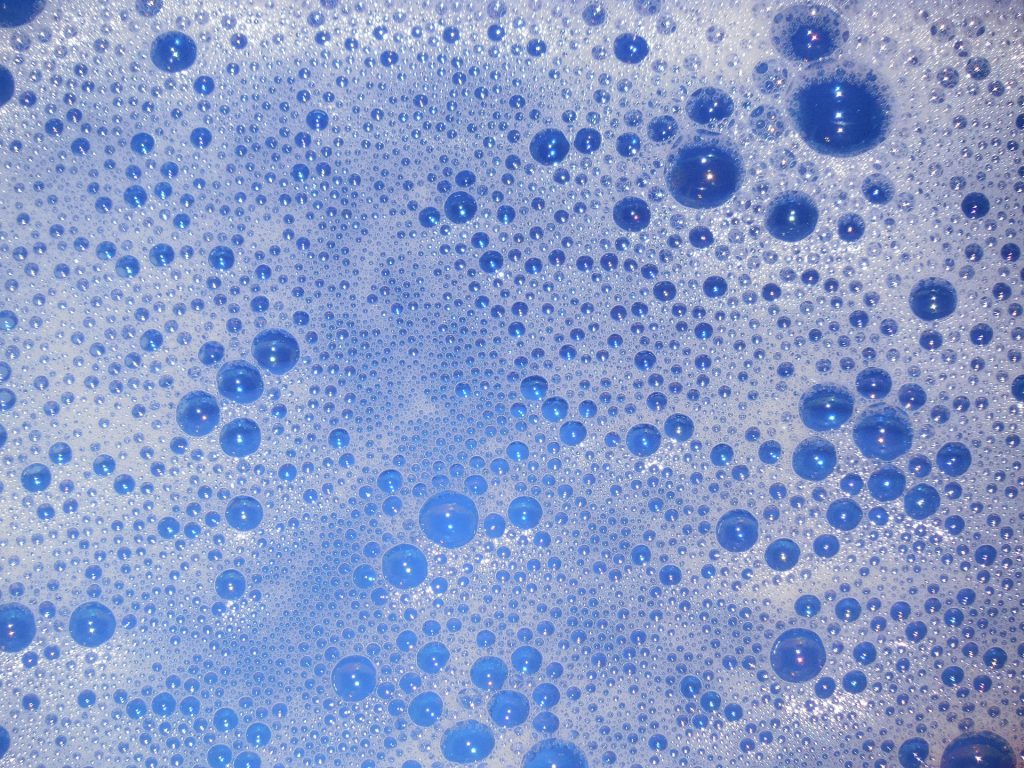
So how can you get cleaner clothes? For starters you should wash your clothes frequently to avoid any build-up, as well as washing any really dirty clothes as soon as possible. It’s best to remove stains as soon as they happen and also remove stains before placing your clothes in the washing machine. You should also be careful to wash similar colours together to avoid any discolouring or fading. When it comes to the laundry detergent itself, always read to instructions on the bottle and ensure that you’re using the right product for the job, as well as the correct amounts.
Further reading:
Myth 2: Hand wash items have to actually be hand washed
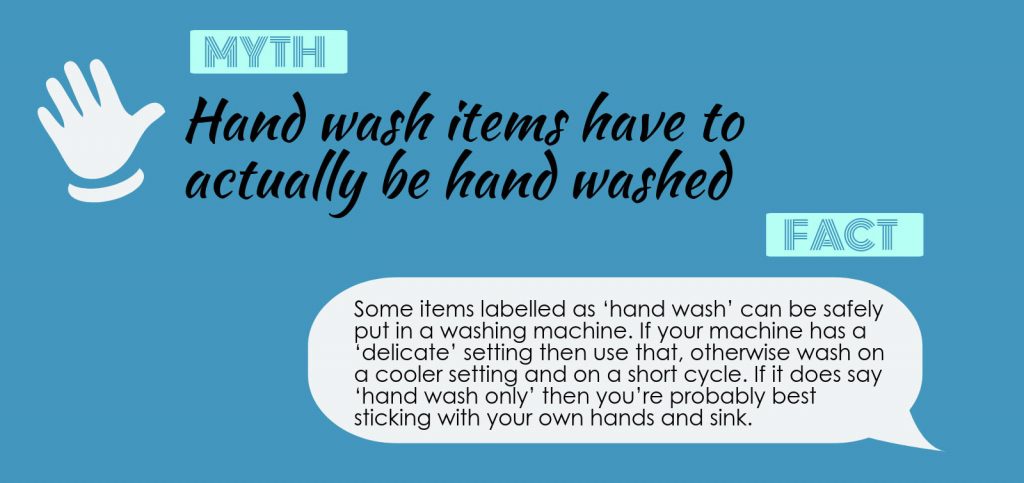
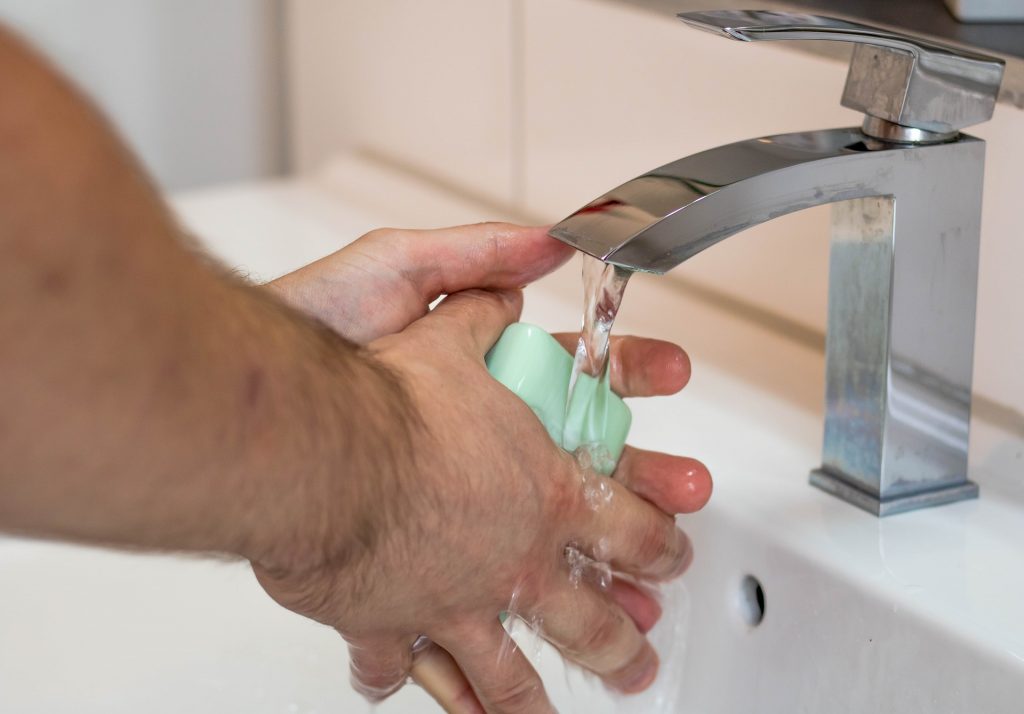
Can hand wash clothes be put in the washing machine?
Resolving this hand washing myth is all about using your common sense really. When it comes to washing your clothes correctly, it’s best to take a look at the care label and see what the recommended advice is. However, hand washing is one of those chores that we all try to put off for as long as possible and really quite time consuming as part of your laundry routine.
Some items in your laundry labelled as ‘hand wash’ don’t actually have to be hand washed and can be safely put in a washing machine as long as you’re careful. If your machine has a ‘delicate’ setting then use that, otherwise wash on a cooler setting and on a short wash cycle. Be careful not to mix up ‘hand wash’ with ‘hand wash only’ on your care label though, as ‘hand wash only’ items should be washed by yourself at home.
To take some extra precautions when washing hand wash clothing on the ‘delicate’ setting, you can wash items with similar colours, you could turn them inside out to avoid any snagging, or you can even buy some mesh bags to put your clothes in within the washing machine.
Further reading:
Myth 3: Jeans should be washed frequently
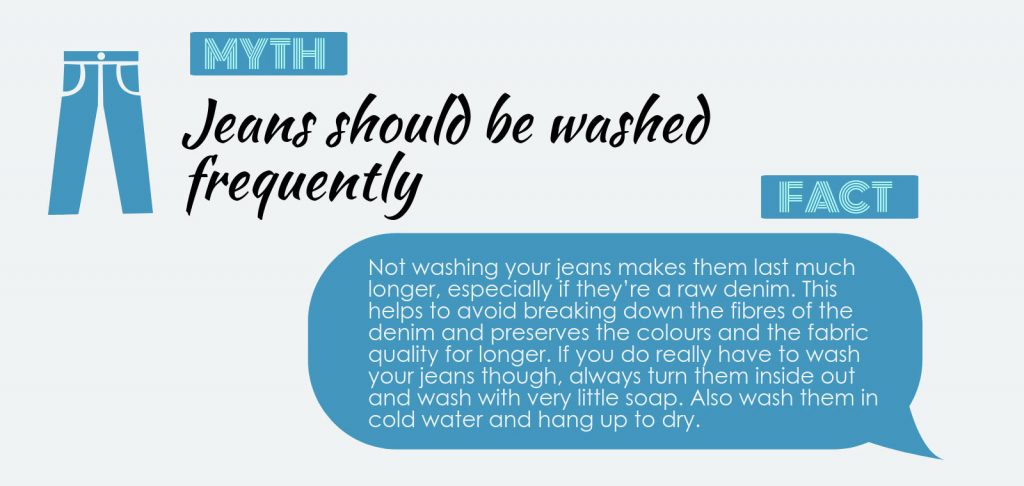
Why washing jeans is bad
It might seem pretty abnormal (especially if you’re a bit of a clean freak) but your trusty denim jeans shouldn’t be washed as much as you think. In fact, some say they shouldn’t be washed at all unless they become really muddy or dirty. This is particularly the case with raw denim, as the fibres will become looser and more faded the more your wash the jeans.
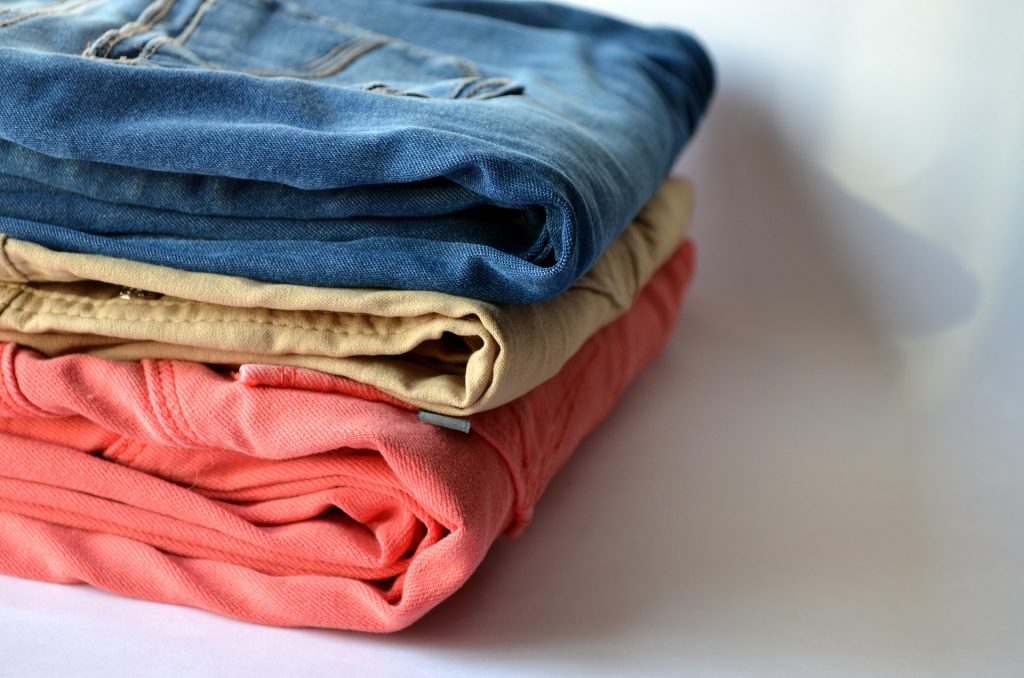
Not washing jeans actually will help to make your favourite pair last longer. This helps to avoid breaking down the fibres of the denim and preserves the colours and the fabric quality for longer. If the thought of not washing jeans (especially a daily pair of jeans) makes you feel a bit funny and you do really have to wash them, you should always turn them inside out and wash with very little soap. You should also wash them in colder water and hand them up to dry instead of tumble drying them.
Further reading:
Myth 4: Fabric softener is always necessary
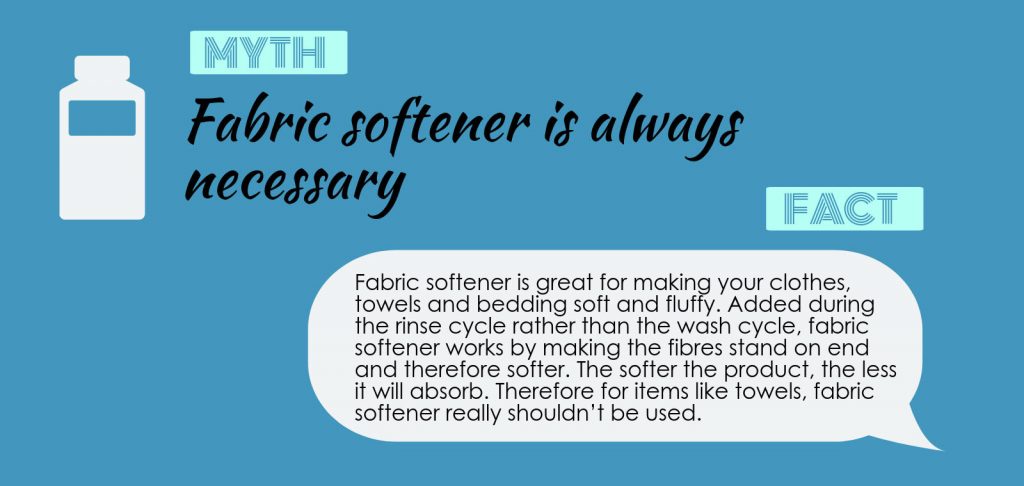
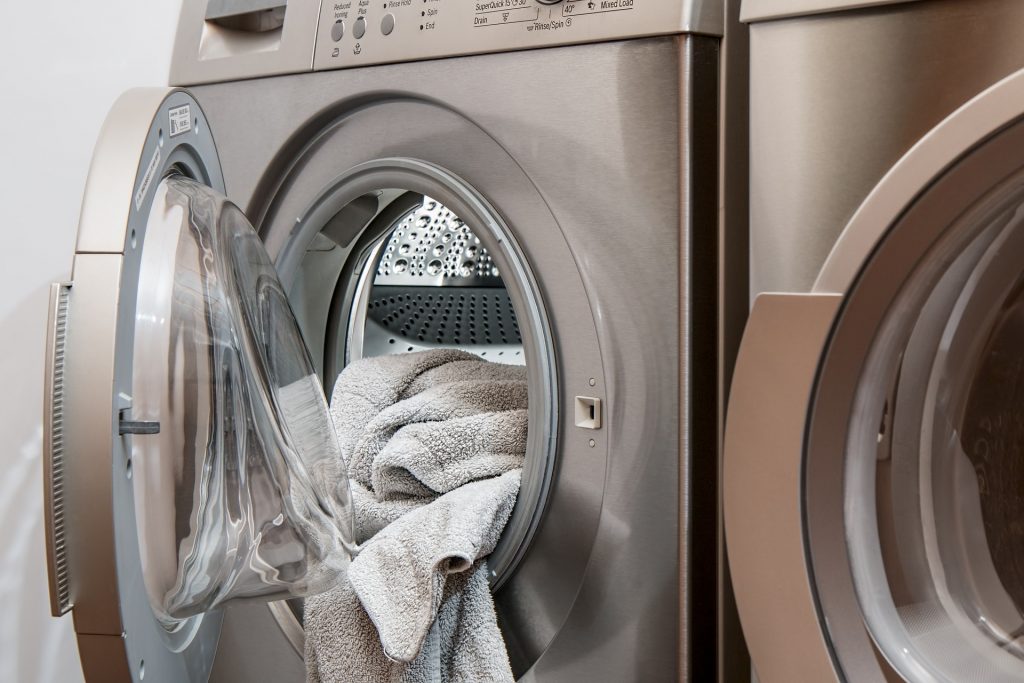
Is fabric softener necessary?
Fabric softener is sometimes necessary but definitely not always necessary! Fabric softener is great for making your clothes, bedding and blankets soft and fluffy. There’s a reason that fabric softener gets added during the rinse cycle rather than the wash cycle though. Fabric softener works by making the fibres of your clothes stand on end and therefore softer. Using fabric softener is like adding an additional layer or treatment to the fibres.
Adding this extra treatment works really well for certain items in your laundry, however can become problematic for certain items such as towels. The softer the product, the less it will absorb. The more fabric softener you use on your towels, the less absorbent they’ll become. They will still be fairly functional but you’ll have to decide whether you prefer soft and fluffy towels or towels that will actually do their purpose and dry you.
Further reading:
Myth 5: High dryer heat causes clothes to shrink

Why do clothes shrink?
Are you a frequent culprit to shrinking jeans, jumpers and other clothing? We feel your frustration but believe us when we say that it’s not actually down to a high dryer heat which causes clothes to shrink! Similar to the heat on an iron, the high dryer heat can actually cause the clothing to stretch out as the fibres become relaxed.

Shrinking is quite commonly caused by the washing process itself or by the tumbling action as the garments hit the sides of the dryer, and not due to the dryer heat. It can depend on the types of fibre of your clothing though, for example natural fibre clothing such as cotton and wool shouldn’t really be tumble dried at all and therefore will most likely shrink if tumble dried. The water temperature of your washing machine is most likely the culprit of your shrinking dilemmas and you should be careful when it comes to reading the instructions on your garment’s care label.
Further reading:
Myth 6: Hairspray removes ink stains


Removing ink stains
When it comes to removing stains, there are a plethora of ‘hacks’ out there to remove the stain swiftly and most often just using common household items rather than having to fork out for a costly stain removing product. This is great news for both our stains and our bank balance! However, you’ll need to be aware of which tips still work and which tips no longer work due to old wives’ tales no longer being compatible with our modern day products.
There are many great stain removal hacks out there that do actually work, however one which really stood out to us from misinterpretation is removing ink stains with hairspray. If you lived in the 1950s then using hairspray on an ink stain might very well have worked due to the alcohol content in the spray. Today’s hairsprays are formulated quite differently though and trying this method might actually make the stain worse rather than better.
Further reading:
Myth 7: The sock monster is real

Sock eating monster
Always wondering where yours and your family’s missing socks go? Yes, they might be disappearing from your laundry but the sock monster really isn’t real. Well, unless you count the washing machine as the monster. There could be a few different scenarios to this problem.

Firstly, your socks are most likely just disappearing underneath the rubber seal (with a front loader washing machine) or between the crevice of the inner and the outer drums (with a top loader washing machine). Secondly, as obvious as it might sound the socks might just be going missing between their travels from the washing machine to the dryer or rail and then to the owner’s room. Especially if you have a larger family, socks can go missing but in fact they might be just hiding in another family member’s drawer or cupboard.
To help solve this problem, you could put the loose socks inside a mesh bag when being washed, you should try and pair the socks up as soon as they’re out the washer, and always check the washing machine for any leftovers once the cycle has finished.
Further reading:
Infographic - 7 Common Laundry Myths Debunked
Laundry is one of those household chores that just has to be done and which most of us try to put off for as long as possible. There are a plethora of tips and tricks out there to help come to the rescue when it comes to our washing machine and laundry dilemmas, and making our lives that little bit easier. There are also many tips out there though that have been passed along like Chinese whispers and aren’t actually true or once were true but no longer relevant with the change in the times and washing machine technology.
It’s time to put an end to some of the most common laundry myths that you (and everybody else believes.) From using more detergent to get cleaner clothes and washing jeans frequently, to fabric softeners always being necessary and the elusive sock monster.





